Really Red | Interview | “We absorbed stuff and then experimented with things”
Really Red was an enigmatic Houston, Texas based punk band formed in 1978. They were the first Texas punk band to have a full length album distributed nationally.
The Really Red line up consisted of John Paul Williams on bass guitar, Ronnie “U-Ron” Bond vocalist/lyricist, Bob Weber on drums and Kelly Younger on guitar. Under occasional variations of their names, these were the original and only band members. Really Red released their first 45 single recording, ‘Crowd Control’/’Corporate Settings’ in 1979. Their debut album, ‘Teaching You the Fear’ was released in 1981. They managed to release another album, ‘Rest in Pain,’ in 1985, although their overall sound changed quite a bit into more atmospheric numbers. 2020 saw ‘Teaching You the Fear… Again,’ a tribute album released with contributions from bands including Sugar Shack, Verbal Abuse, The Hickoids, Mudhoney, Gary Floyd/Dicks, Jello Biafra, The Bellrays, Darwin’s Finches and MDC among many other notable groups.
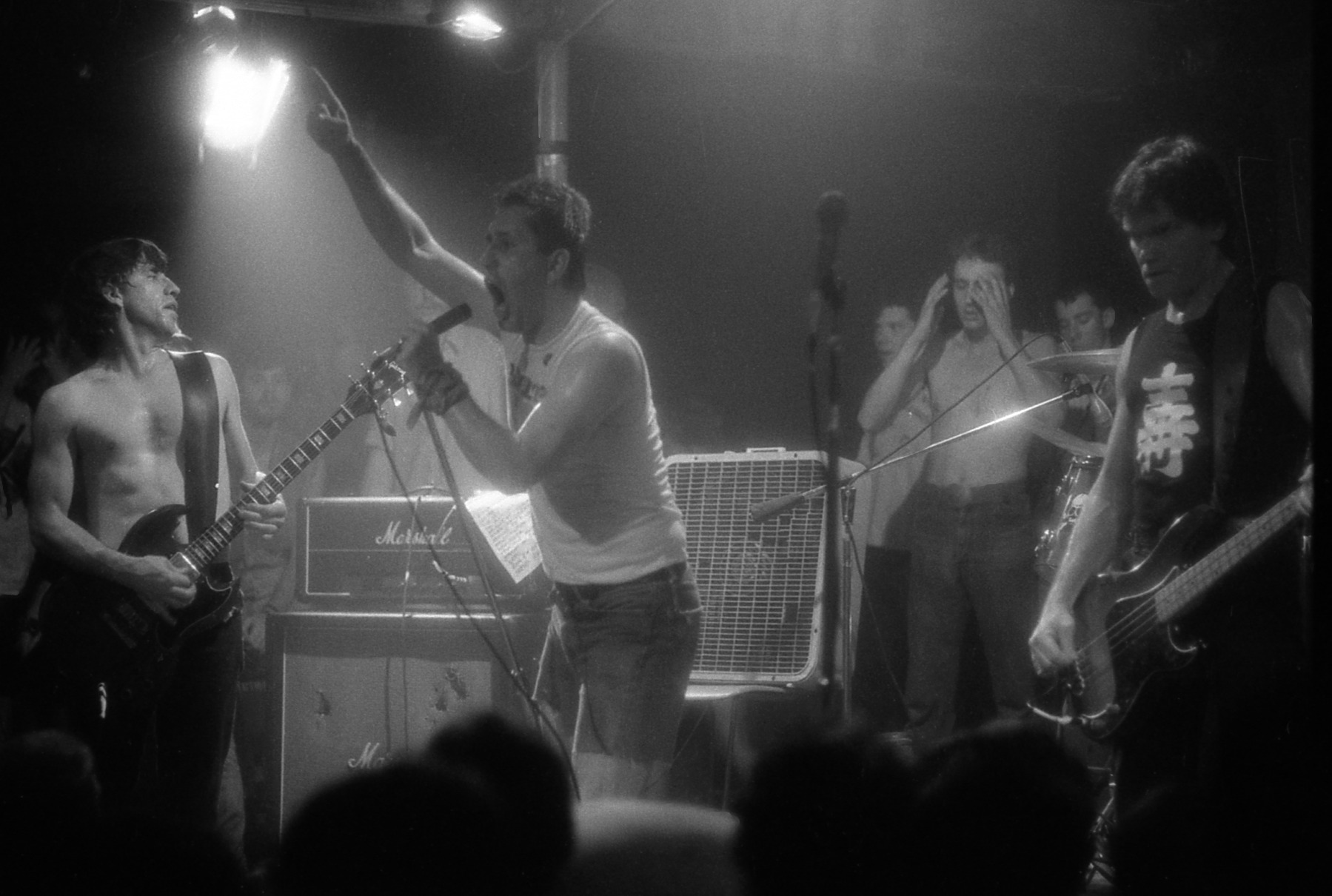
“We absorbed stuff and then experimented with things”
It’s really wonderful to have you. Would love to start by talking about your childhood. Are you originally from Houston, Texas?
Bob Weber: No. I was born in north-eastern Ohio after Christmas of 1954. For nine years my father shoveled coal in the basement in the winters to stoke the boiler for the radiators. He plowed and planted a vegetable garden in the backyard. Mom made simple, low-cost meals for the family and we rarely went out to eat in a café or restaurant. We rode a toboggan down the slope of the ravine in the backyard after a heavy snow. Florida was a popular destination for snow diggers. My mother’s side of the family started migrating South so we packed up the house and moved to Clearwater in Florida in the summer of 1963. Dad and Mom, Depression Era Kids and WWII survivors, got us into a house and started their new jobs at two different elementary schools. I moved to Houston early in ‘77 after graduation from the University of Florida.
What was it like growing up there in the 70s? Are you coming from a musical family? What did your parents do?
Father and Mother were primary school teachers in Florida. Mom settled into 2nd grade immediately and perfected it. Mom is still alive in Florida at 96 years of age. Managing her care from 900 miles away is going to send me to an early grave. They were both members of the teachers’ union. One way for them to get bonus pay was to present a paper to their students about travel. Every summer they packed up the cartop camper, a Coleman gas stove, a camera, and a bag full of maps from AAA with a month-long planned route. In 1962 we drove from central Florida all the way to Seattle, Washington state and back for the 1962 Seattle World’s Fair. I was seven that year.
How would you describe the music scene there when you were still growing up? Did you attend a lot of shows? Do you remember any remarkable performances that stay with you forever?
Yes! Vanilla Fudge. Don’t ask why but my older sister took me to an early concert on the lawn at a university in Tampa. There was a big screen behind the stage where brilliant lava lamp colors swarmed and oozed. Pot smoke was wafting past my innocent nostrils. My music exposure prior to that was commercial radio, mom and dad’s records, and school band. Another teenage experience: My mother took me and my cousin Patti to a drum clinic given by Roy Burnsat, a music store. He played and spoke. Everyone got a raffle ticket for a drawing when we first arrived. Patti won the gleaming stainless steel Rogers snare drum. I was so jealous! Surely Mother sensed it so she told Patti that since I was the drummer, I should get the snare drum and Patti could have something else. I think Pat forgave me long ago because we are close friends and allies at this stage in life.
If we would visit your teenage room, what kind of records, posters, fanzines and books would we find there?
I didn’t have any records or posters. I wasn’t a rock-n-roll baby in the 60’s. But I was deeply involved in music. School organizations and the other students provided my stimulation and awakening. In middle school I was in marching band, concert band, and the stage band. The stage band played mostly swing from the 40’s and 50’s. I took piano lessons at home which focused on simple arrangements of classical pieces. That bored me so the teacher let me study some 60’s pop music by American and UK groups. My academic work kept advancing so by high school (years 10 to 12 of public school) I was studying calculus, physics, chemistry, and French language. Meanwhile I stayed devoted to percussion, so my academic and social life suffered a bit. Before graduating I was getting exposed to Frank Zappa, Mad Magazine, and some of the late 60’s rock music. I also joined the Marine Corps League Devil Dogs Drum & Bugle Corps. That was a trip.
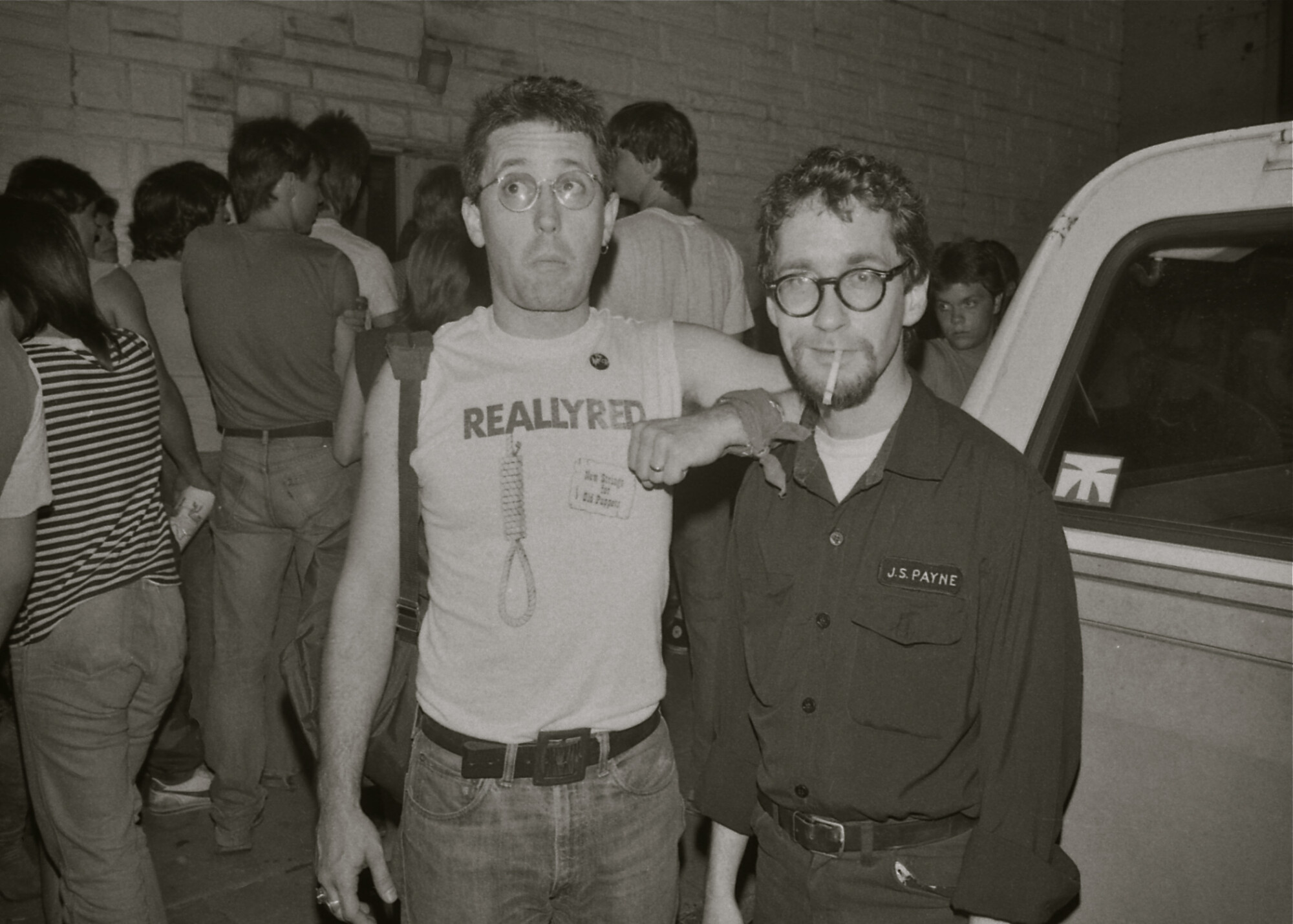
When did you first get interested in guitar? What was your drum set?
Guitar? I never learned the guitar, but who growing up in the 60’s did not get exposed to guitar music? My parents weren’t convinced I was going to get serious with the drum set, plus they were on a budget with four kids. So, after I pleaded and begged, my Christmas gift was a Sears & Roebucks drumkit, heavy cardboard shells and cheap plasticheads. The cymbals were flat tin pans with no ridges or tonal quality. The sound quality was horrendous. I think I destroyed it before long. I finally got a Rodgers single tom kit and some Zildjians.
Did you and your friends have any special hangout places where you could listen to music and just do stuff?
It was the high school band room. In a small house with two brothers and an older sister there wasn’t much privacy, so home wasn’t the hangout. I rode my bicycle to high school so I didn’t have a car. And didn’t start smoking cigarettes or pot until after high school. I was a late bloomer. One time I was sitting in a chair in the entrance to the band room looking through Mad Magazine. The band director walked up and took it to see what it was. It had a centerfold of a nude Amazonian woman with a huge Afro hairdo and large growth of nappy hair in her armpits and her twat. It was hilarious. He didn’t think so.
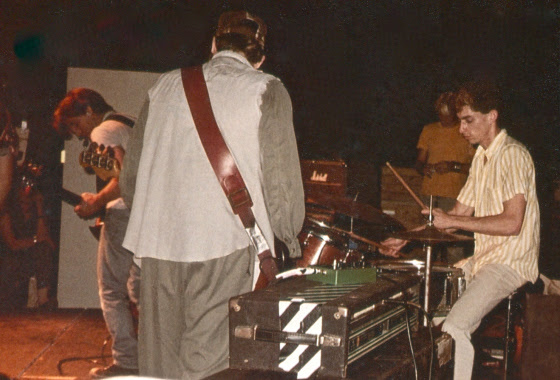
Were you in any bands before the formation of Really Red? Is there anything released or even unreleased from that period of time?
I still have LP records of my high school concert band and marching band, but I haven’t touched them since. I’m not much into souvenirs. I was the drummer in the Bonzo Toe Band in high school but we only played a couple parties. I also ended up playing with a small outfit called The McPherson Sisters, a black mother and her twin daughters who had stars in their eyes. As soon as I moved to Gainesville, Florida I joined the Gator Marching Band. The Drum Major didn’t know where to put me, so I got timbales and bongos and made up my own parts.
What led to the formation of Really Red? How did you originally meet members of the band and what was the overall vision with the band?
The other guys were long-time friends, but they didn’t like their drummer. I met Ronnie Bond at a record store. He suggested I come and audition for the part. Boom, I was in the band. There was no vision for the band, certainly not a unified one. At least the guys were serious about it because from the beginning the rehearsal schedule was a commitment of 3-nights a week.
What kind of sound did you want to follow?
At first it was The Who, the MC5, The Explosives (Roky Erikson), The Velvets, and The Kinks. Those groups and many others were our inspirational resources. When we started in 1978 the L.A., San Francisco, and New York scenes were cranking up quickly. There was a Texas scene growing in Austin, Houston, San Antonio, Dallas, and Denton. Plus, bands were coming over from the U.K. – Tom Robinson, The Damned, Go4, Wire, UK Subs, The Vibrators, The Clash, Siouxsie Sioux, The Fall, Magazine, Buzzcocks… When I joined the band in ’78 there was an extra guitarist (Curtis Riker), but after a discussion about direction Curtis left the group and we focused on the art/punk sound. We absorbed stuff and then experimented with things.
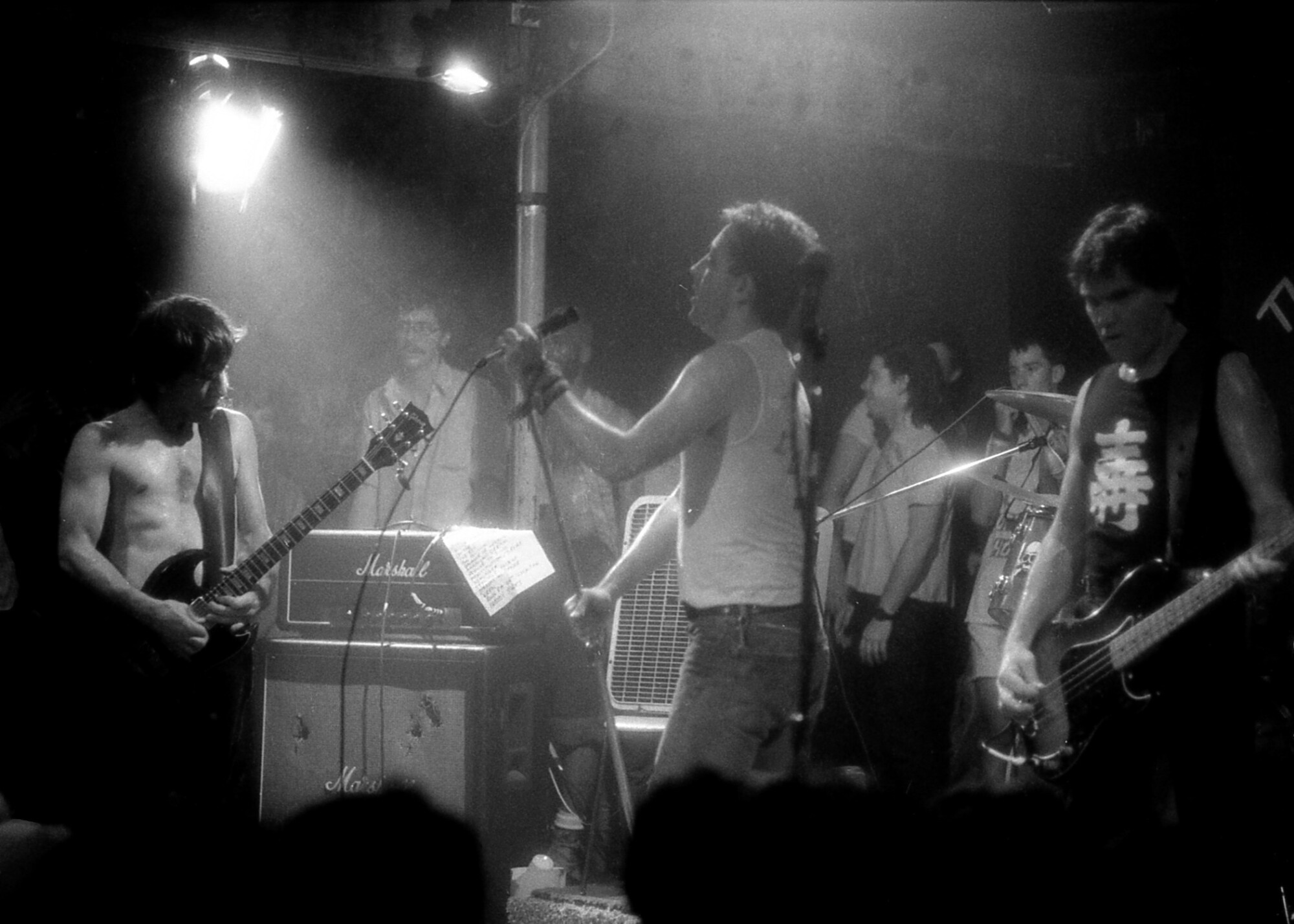
Did you do a lot of shows at the start? What club did you play and what bands that you shared the stage with?
Of course. Once we got a 20 minute set together we started booking gigs everywhere we could.
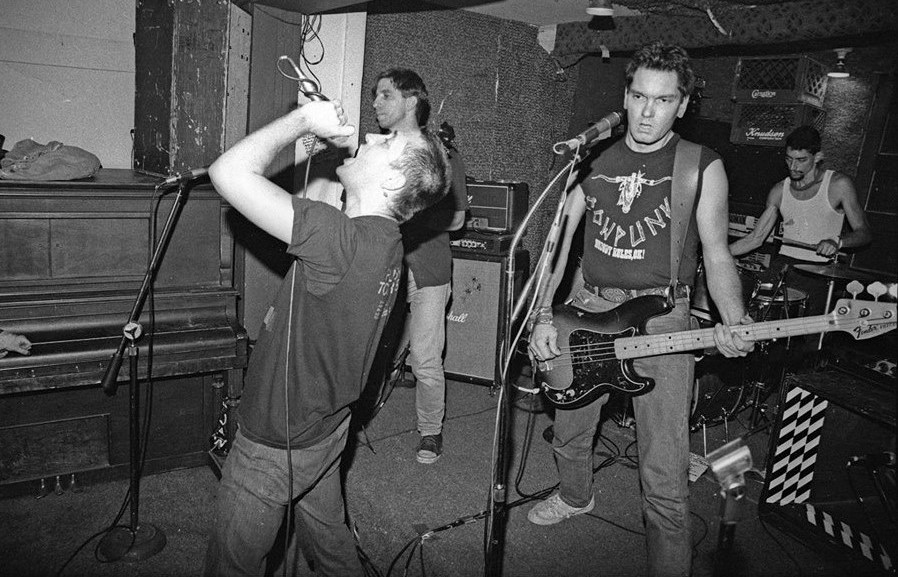
What did your repertoire consist of playing live?
I had a box with all the set lists and gig dates. What a smelly mess. But I gave all that to the University of Houston Library about three years ago for their archives. We stuck with the bass, drums, and guitars with a few effects. Oh, and frequently Ralph Armin Kaethner joined us for a few tracks adding his tenor sax. It was typically a 30 to 45 minute set but we mixed up the tracks and eagerly added new material as it developed.
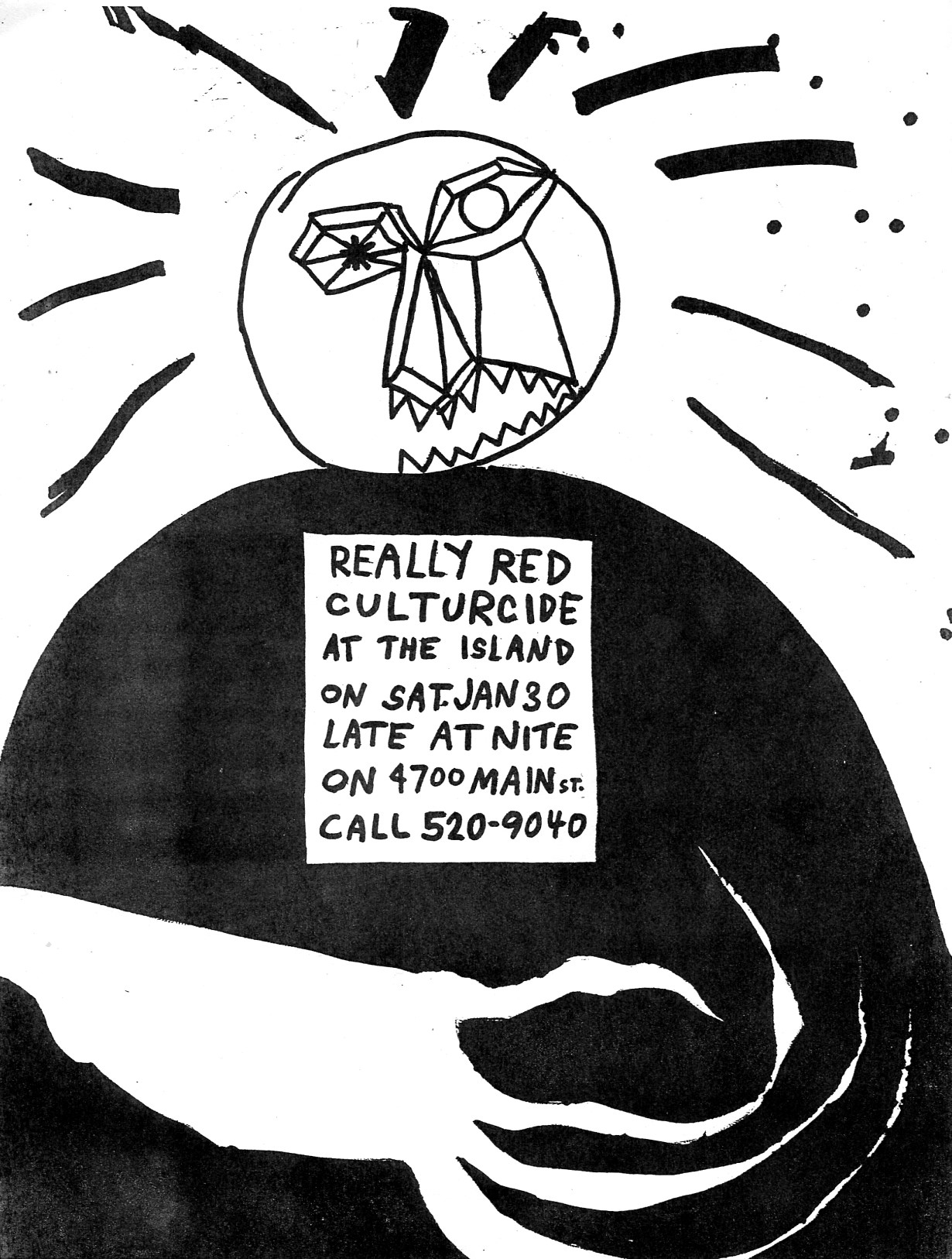
There must be a story behind your band’s name?
Maybe, but I don’t remember it. I think it was Kelly’s idea. Okay, now talking about the released material. In 1979 you decided to self-release a 7-inch under the label name C.I.A. Records. Two tracks were featured on it; ‘Crowd Control’ and ‘Corporate Settings’.
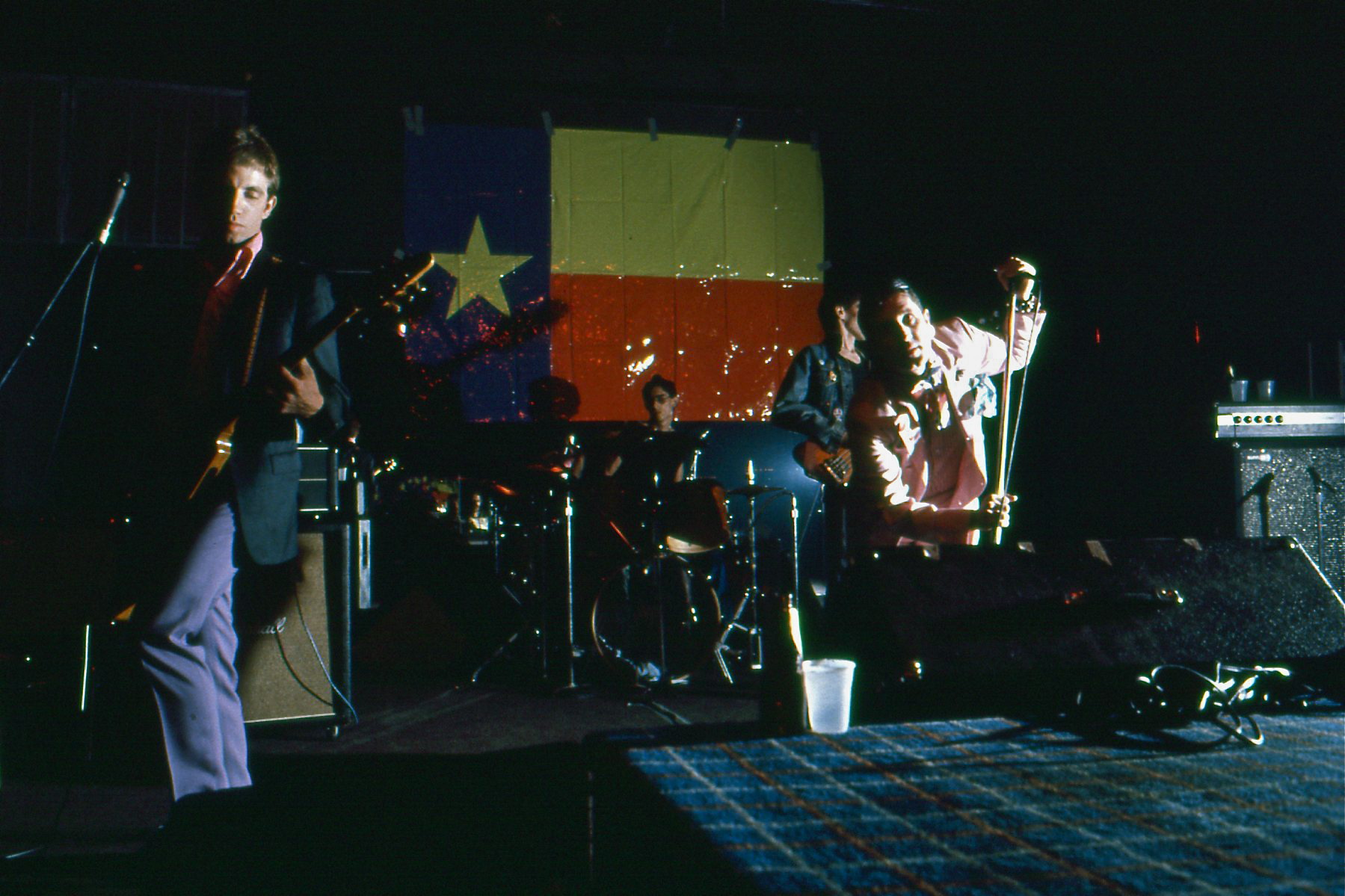
Where did you record those tracks? What’s the story behind them? Do you know how many copies you pressed? Did you send them to any radio stations for possible airplay or even labels?
That was at a small recording studio on Richmond Ave in Montrose. It was called Magic Rat Studios or MRS for short. Bobby Ginsburg was the recording engineer. An interesting side note: I have been recording at Wire Road Studios the last few years for The Popeboy Collective and for my own album under the group name Infrequencies. When I first went to Wire Road to book recording slots for the ‘Teaching You the Fear…Again’ double LP I came face to face with Bill Wade. When I told him what I was doing and a bit of history he smiled and told me that he managed Magic Rat Studios back when we recorded our first tracks. So here we were, about 40 years older with wrinkles and age spots but still standing. We recorded those first 5 tracks at MRS. One was a New Wave/Punk version of ‘Downtown,’ the Petula Clark hit from the 60’s. We decided to pick the best 2 out of the 5 to be our first single. I sent the ¼” master tape of those two tracks by post to a pressing plant in Phoenix, Arizona with an order for 500 of the 7” singles. We were so busy working and gigging and partying that we never got to design a printed jacket for that one (but the Mad Butcher did when he put out a limited edition reissue a couple years ago!). I was excited about it anyway. Really Red met at Kelly’s house or at the record store where Ronnie worked to listen to it when it showed up. Kelly immediately announced it dead on arrival, saying it wasn’t good enough to use for promotion. I was disappointed but we moved on. It finally got released on ‘The Complete Collection’ in 2015 on Biafra’s label (Alternative Tentacles). That was a big project that I worked on for years. They remastered everything. Alternative Tentacles issued it on 3 LPs or the entire thing on a double CD. It has been out of stock for a few years, but Jello told me he had a new order in place to reissue them.
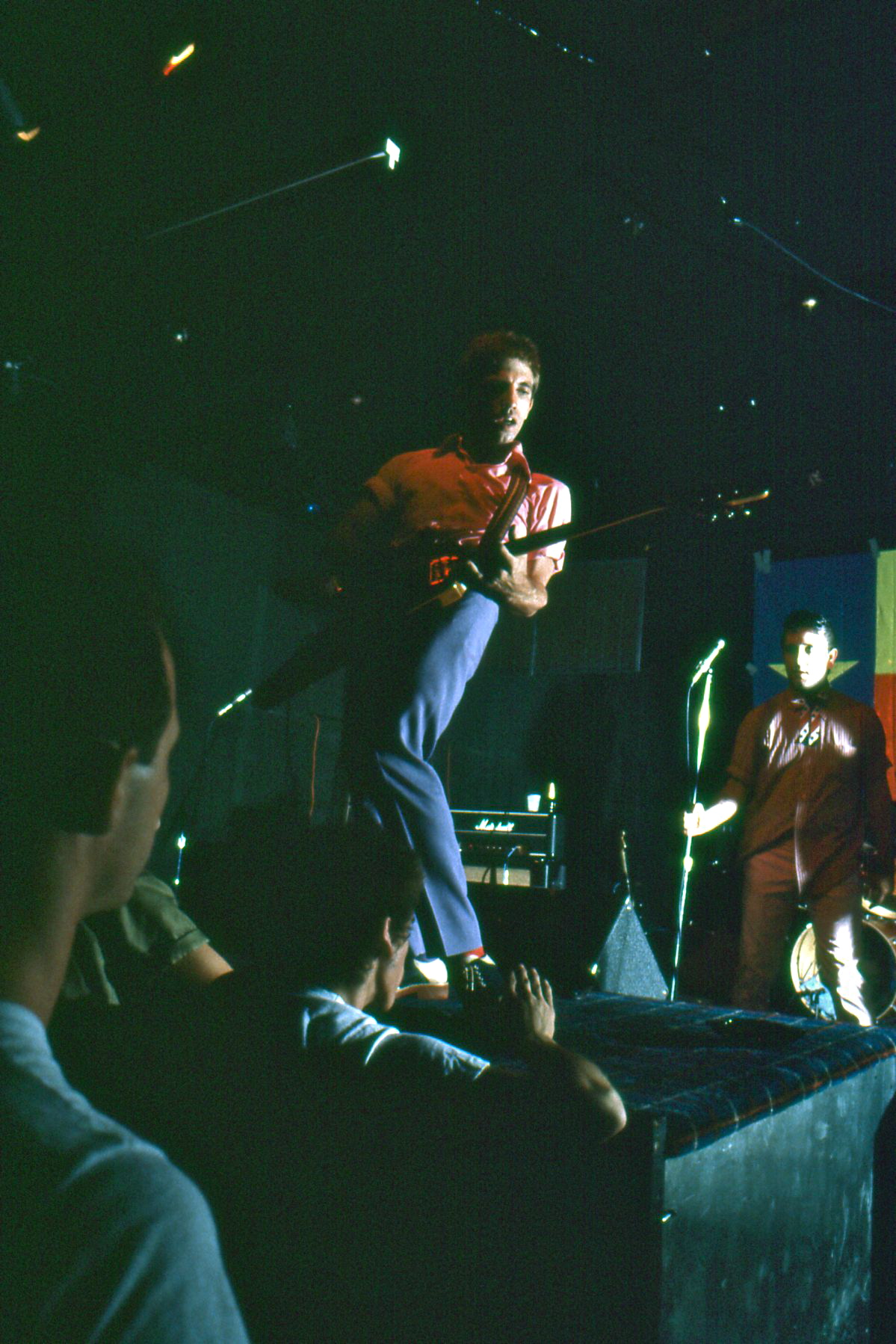
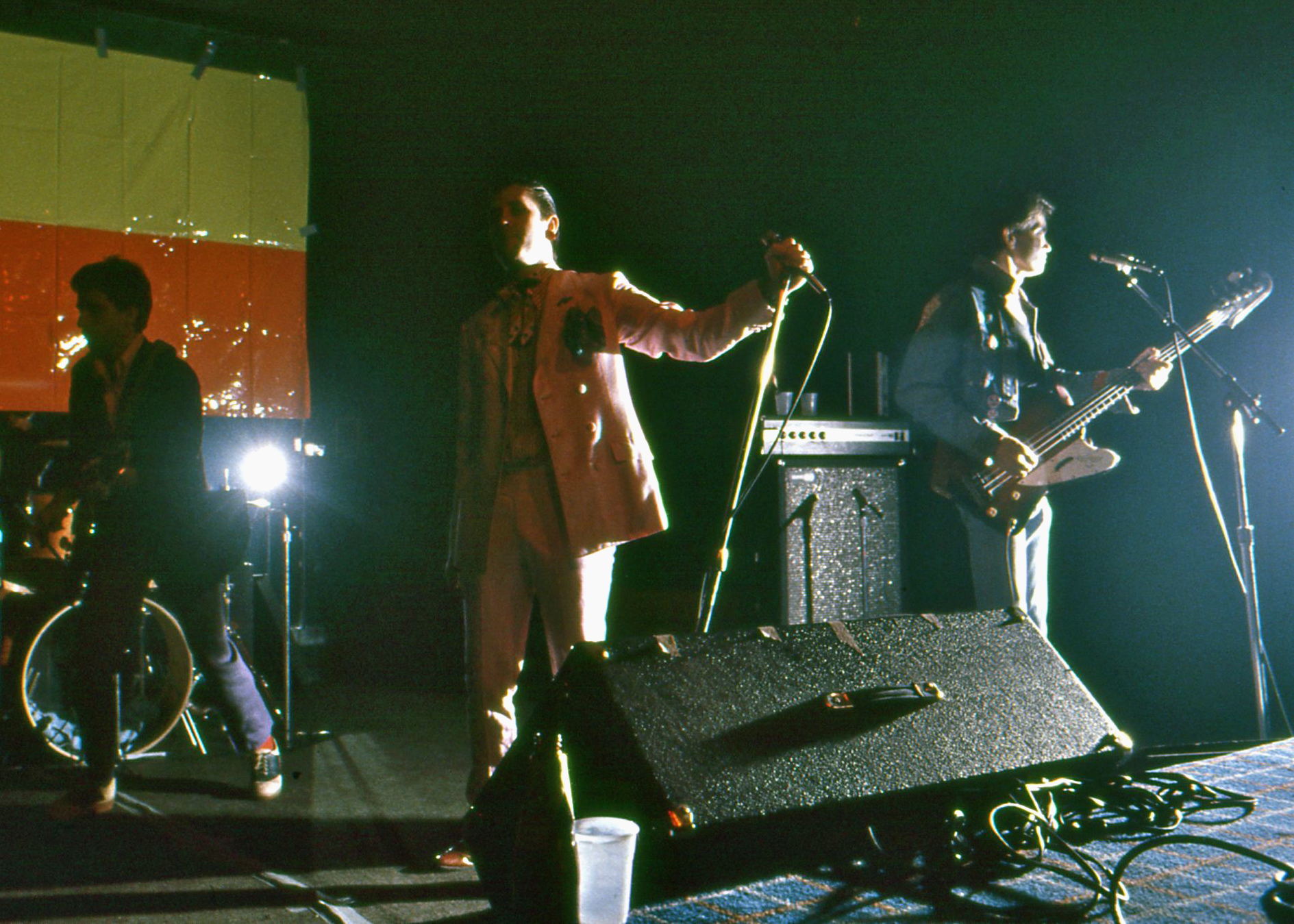
How much original material did you have back then?
We decided to do only original music. I say that, but we had the song ‘War Sucks’ in our set list in most of the shows we played no matter where we went. We dropped the ‘Downtown’ cover early on because we were coming up with lots of new material. ‘No Art in Houston’ was one of our musical experiments. It used lyrics written by Perry Webb (aka John Peters, a visual artist).
What’s the story behind your debut album, ‘Teaching You The Fear’? Where did you record it? What kind of equipment did you use and who was the producer? How many hours did you spend in the studio?
That was at ACA Recording Studios, I believe. We didn’t have a producer. Let me rephrase that. Whoever held their liquor best and had some clarity worked with Andrew Bradley, our recording engineer, to decide what to do next. I’m not sure but I think it was just one session to get the basic tracks and overdubs recorded, then a 2nd session to mix it. Keep in mind that this was analog recording so the flub-ups in my drum beats just got mixed in. No one went back and moved beats over to get everything to sync perfectly.
Is your question about the producer, “Who paid for the album”? We saved $$ from gigs and I made up the difference out of my pocket.
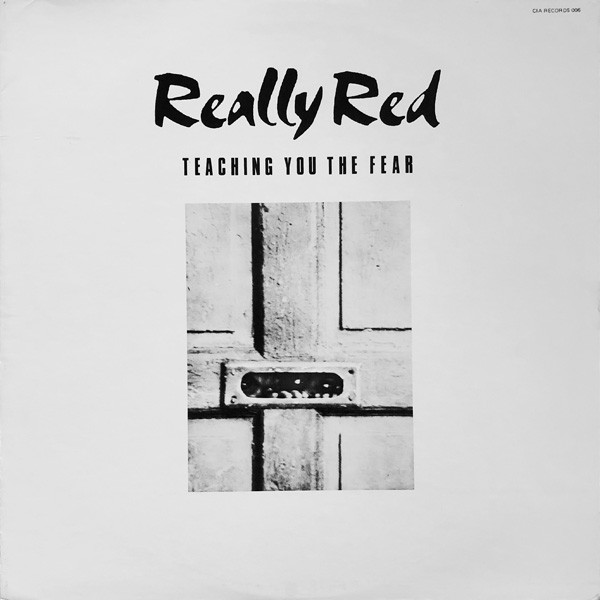
“Our musical influences were all over the map”
Would you share your insight on the albums’ tracks?
Musically we were tight by then. Our musical influences were all over the map. Ronnie had a record store and turned us on to everything from film soundtracks, reggae and dub, Roy Orbison, some of the outlaw country, plus everything we saw or heard live. The lyrics are another thing. Ronnie wrote it like he saw it as a self-styled business partner and working-class soldier. There was so much wrong with what was happening in the world. He had a gift and made it clear how he felt about life and its inequities. It’s easy to see things that need to be fixed. It’s another thing to be able to make a community move together in the right direction without a lot of whining and hollering.
Really Red were the first Texas punk band to have a full-length album distributed nationally. Tell us about the circumstances
Mind over matter I suppose. And not many of the punk bands had a chemical engineer (me) bankrolling the project.
Tell me about some of the most memorable gigs you did. What are some bands you shared stages with?
The Dicks and The Big Boys from Austin, Texas always fired up the crowd. Bobby Soxx was wild. AK-47 had power and proved it in their live shows. With Ronnie and Jim Craine running Real Records, the phone lines were busy with record distributors and bands. They heard about all the traveling shows, so that got us on some great bills. We didn’t have an agent so Really Red never crawled up the ladder to the big venues. We played with the Bad Brains and Minor Threat. One of my biggest shows happened a decade ago when Anarchitex got to open for Jello Biafra and the Guantanamo School of Medicine at the Continental Club.
And what would be the craziest gig you ever did?
That’s easy. In the Cock Pit in Cankton, Louisiana. It was a fenced ring where they released trained fighting cocks (roosters) with clipped wings, a gambling and drinking thing, I guess. Maybe two people showed up. I was pulling a small, rented trailer carrying our equipment behind my sedan and got a flat tire on the way back to Houston. I traded that car in for the big cargo van shortly after that.
‘Rest in Pain’ was quite a departure from your debut album. How did you first hear about Red Krayola? What kind of records did you want to make?
‘Rest in Pain’ was the evolution of the group as we moved more towards the hardcore sound. The sets were exhausting for me with my 3S drumsticks and my playing style which involved lots of arm movement. Ronnie or Kelly brought in the Red Krayola song. We were pissed at Ronald Reagan and the Republicans’ aggressive arms race and nuclear weapons build up. The lyrics spoke about fighting and war. ‘Balance of Terror’ is an amazing track that speaks Truth to Power today.
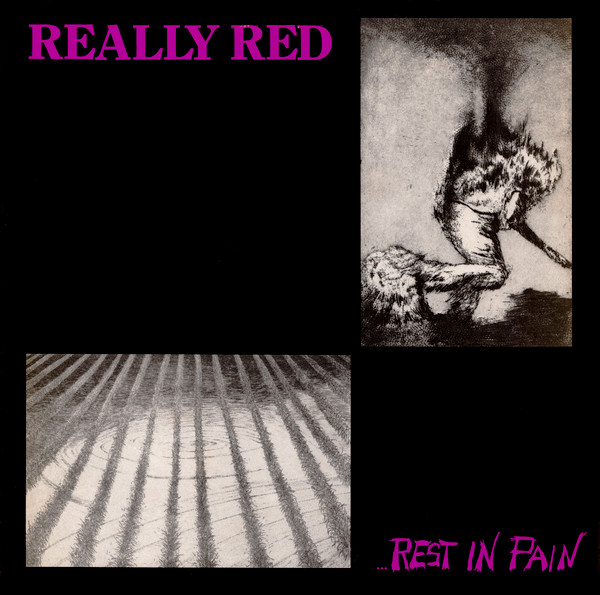
There was also another 45 single released and two 7-inch EPs, and tracks on various compilations… Can you fill up the discography for me?
How about this partial listing?
CIA-001 ‘Crowd Control’/’Corporate Settings’ [7” 45 rpm]
1979 Really Red – 500 pressed, but not released until now.
CIA-002 ‘Modern Needs’/’White Lies’ [7” 45 rpm]
1980 Really Red – 500 pressed (out of print)
CIA-003 ‘Despise the Moral Majority’ EP [7” 33 rpm]
1980 Really Red – 500 hand stamped jacket (out of print)
CIA-005 Mydolls 3 song ep [7” 45 rpm] 500 pressed
CIA-006 ‘Teaching You the Fear’ [12” 33 rpm]
1981 Really Red – 3 pressings with 3 different jackets, 2500 total
1981 ‘Let Them Eat Jellybeans’ [12” 33 rpm]
‘Prostitution’ by Really Red VIRUS compilation LP (out of print)
CIA-007 ‘YEAR ONE’ <initially a cassette tape inside 12” LP jacket>
1981 ‘CULTURCIDE’ [12” 33 rpm]
CIA-008 ‘Imposter’/’Exorcism’ – mydolls [7” 45 rpm] 1981
CIA-009 ‘New Strings for Old Puppets’ – Really Red [1982 _ 7” 33 rpm]
1983 ‘Cottage Cheese from the Lips of Death’ <12” 33 rpm>
w/ Really Red ‘Nobody Rules’ (out of print)on Ward 9 Records (Butthole Surfers)
CIA-010 ‘I’LLBEONTHEFONETOYOU’ [1983 release 12” 33 rpm]
CIA-011 ‘Doomsday Massacre’ (out of print) [1983 release 7” 33 rpm]
CIA-012 ‘Marching Plague’ (out of print) [1983 release 7” 45 rpm]
CIA-013 ‘Twentieth Century’ by Introverts (out of print) [1983 cassette tape]
CIA-014 ‘Speak Softly’ and Carry A Big Stick’ by mydolls 1983 [12’_45 rpm]
1984 ‘Dementia 5’ – compilation (out of print) [C40 cassette]
‘Youth Culture for Sale’ by Really Red and ‘Savage Song’ by Mydolls
HIDE 5 compilation cassette
CIA-015 ‘Rest in Pain’ (out of print) [12” 33 rpm]
1985 Really Red’s final LP released postmortem.
1986 ‘Warehouse (7) – Escape Plan Foiled’ [12” 33 rpm & CD]
TORONTO, ONTARIO
CIA-016 ‘Treason of the Heart’ [1987 Introverts C60 cassette] (out of print)
CIA-017 ‘The Dog Who Wouldn’t Die’ [C60 cassette]
1987 International compilation published by Shepherd Wong Music (out of print)
1989 ‘KILLED BY DEATH’ #2′ [33 rpm 12”LP] (out of print)
RR’s Crowd Control (without permission) on REDRUM Records, HELL, Norway
1989 ‘KILLED BY DEATH #4’ [33 rpm 12”LP] (out of print)
RR’s ‘Modern Needs ‘(without permission) on REDRUM Records, HELL, Norway
That is enough for now.
C.I.A. Records were working in a true DIY sense and you’re still running it. How many releases did you put out? What are some of your favourite or let’s say most interesting ones?
That is true, although I depend on many others. And I ask for help frequently. My effort is DIY most of the time because one cannot make a significant impact without the collective effort. That’s what the Republican Party, the new fascist regime in this country, doesn’t understand. Humans come in all shapes, sizes, colors, and capabilities. I still find time and space for the less capable and less orderly sorts who often have some amazing creative sides. The most interesting release that I’m working on is the one I am working on right now.
As it would be pretty impossible to discuss everything you were involved with, I would like to name some other projects you were part of and I would really appreciate it if you can share as much as you like about them, so we can get some history together. Anarchitex, Culturcide, The Popeboy Collective, VEX…
I’m impressed that you have the spelling correct. The music press in the USA frequently misspells Anarchitex and Culturcide. We often abbreviate Anarchitex as ATEX. At the beginning of this century, I was getting the itch to play and perform again. I started rehearsing with guys in their studio on the East side of downtown. After a few months we were beginning to meld. My day job pulled me away and before starting up again one of the guys died. Tory gave me a call in 2007 and told me about the Axiom 20-year Reunion event. So ATEX reformed. It was a two-day event happening in Fitzgerld’s with upstairs and downstairs stages. We had a blast, which launched a new 5-year span of ATEX shows teaming up with all different kinds of bands. Then my company job sent me to the RoK (Republic of Korea) on a start-up assignment. ATEX played the last gig without me. After I left my engineering job,I searched for a new direction and joined what was left of the Space City Gamelan. Gamelan has no connection to anything I had ever tried before EXCEPT that it is percussion but in another dimension.It just about blew my mind. There were no written parts, but the parts were precise and detailed rhythmic patterns on bells or blocks tuned to a set of gongs. The tonal scale had no relation to the octave scale, the basis of Western music. After I realized that it would take me five years or more to master the techniques, I gave up.
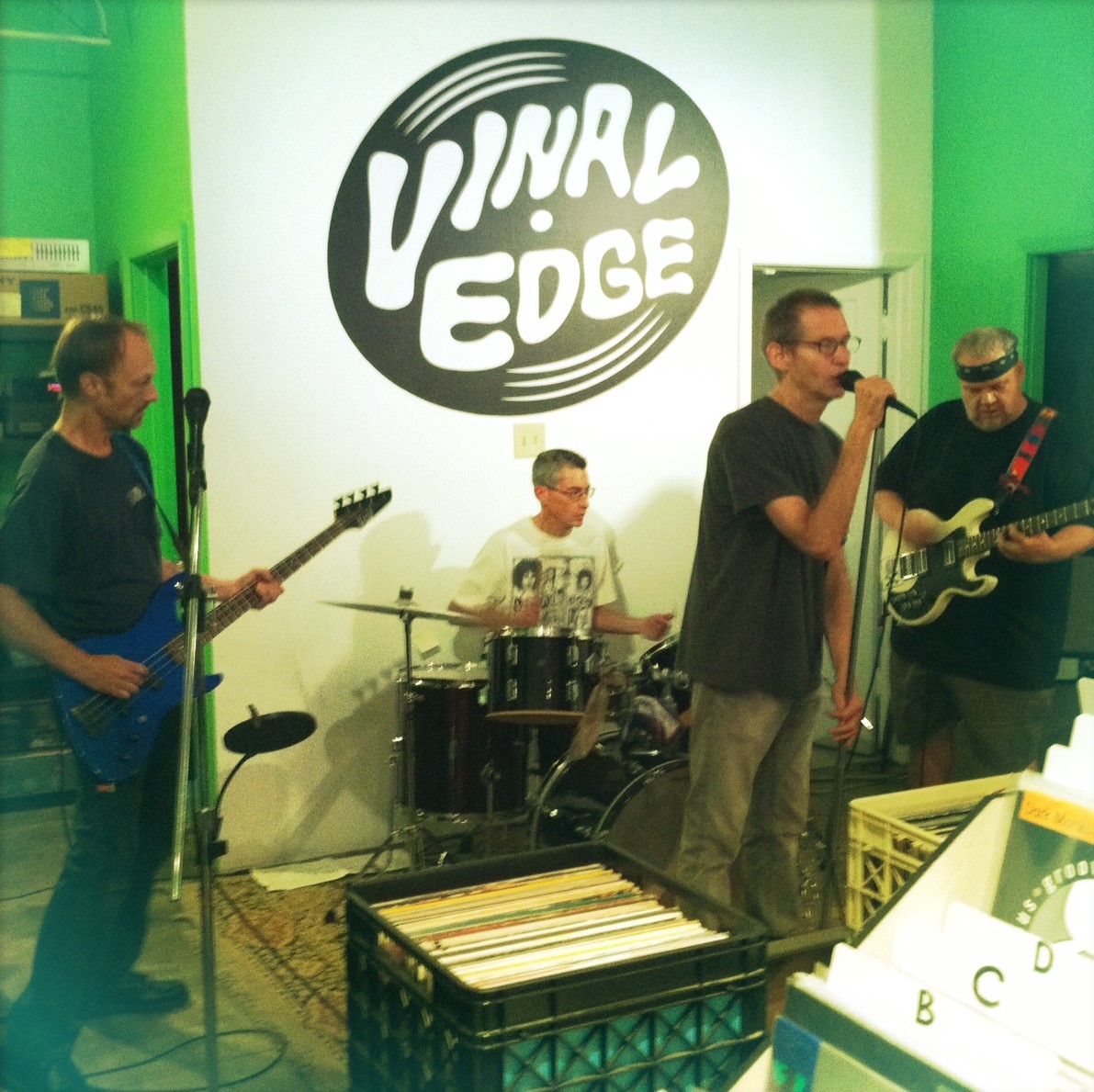
Tell us about The Dog That Wouldn’t Die, Manifestation 9, and Manifestation X…
How much space do you have? After the Really Red tribute compilation came out, I was re-energized about producing music albums and working with all types of creatives. I love socializing with people, young and old, yet I don’t mind working for hours by myself on long term projects with lots of details. Does that make sense? I’m also not afraid of making phone calls, local or international. Diving headfirst into music production gave me a chance to extract myself from my 37-year-long career as a chemical engineer (I still get job offers). But my growing awareness of the impending global chaos made music more important to me than it ever was. I have been giving up sleep to focus on music projects rather than fighting with stupid morons who think they know the answers to highly complex global issues. Plus, figuring out how to run an indie label in the 2020s became a real learning experience (good for my dying brain cells). I am making new connections with others who have similar motivations and inspiration. I’m wrapping up the Manifestation 11 project which is the most complicated project I have produced so far. In fact, I tried to mail some LPs and CDs to the group Mraz in Moscow Friday. The postal lady searched and finally found out that we couldn’t do it. USA and the EU nations among others blocked all shipments to Russia. I may have to send it through Turkey.
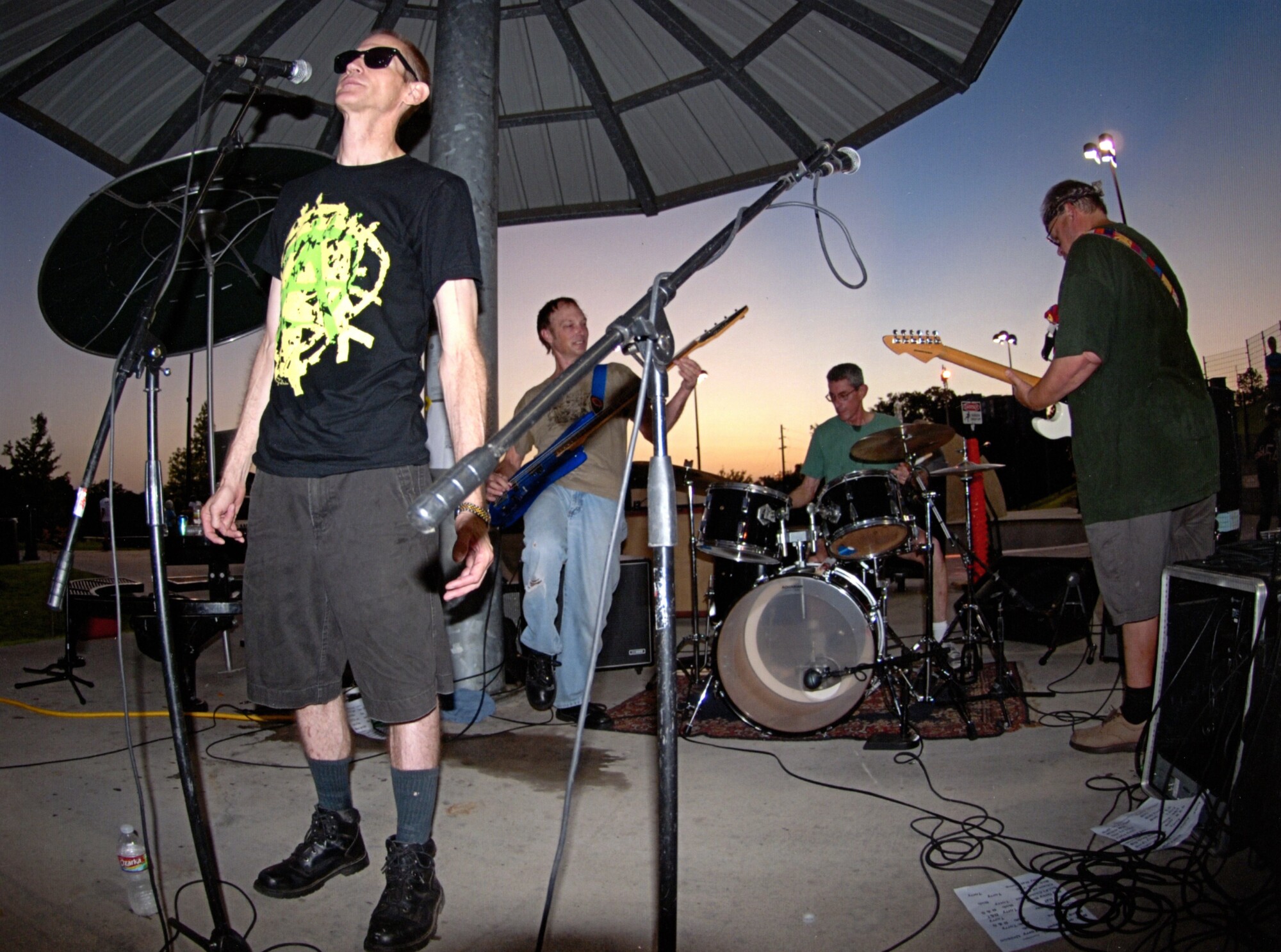
Is there any unreleased material by Really Red? Or even by related projects?
No…
What happened after the band stopped? Were you still in touch with other members?
In the beginning, I became the DMZ (demilitarized zone), the moderator between the other three guys in Really Red. It was traumatic. We had the rough tracks, maybe even a first mix for the ‘Rest In Pain’ album, but it took most of a year to get the final master out to a pressing plant. I got it out and delivered boxes of LPs to each one of them. Then I sent them out to record distributors and a dozen magazines or fanzines.
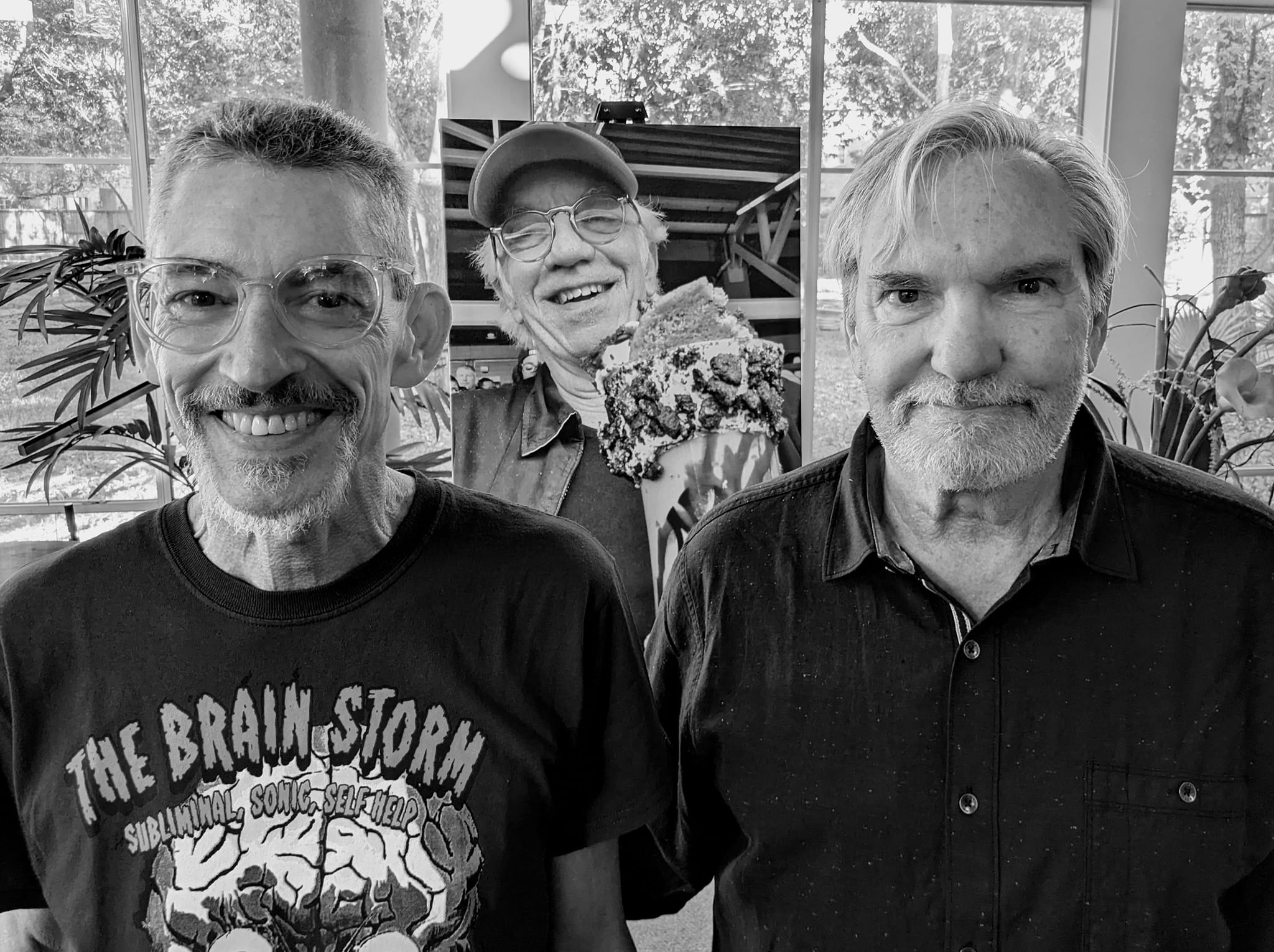
Looking back, what was the highlight of your time in the band? Which songs are you most proud of? Where and when was your most memorable gig?
As simple as it is musically, ‘Entertainment’ might be my favorite track. And Darwin’s Finches updated version of that song is amazing. The most memorable gig must be one of the shows with D.O.A. but brain fog keeps me from telling you which one.
What else currently occupies your life?
You don’t have the space in your magazine. When do you want me to come over and visit? I want to find out what your sound system can do to my brain.
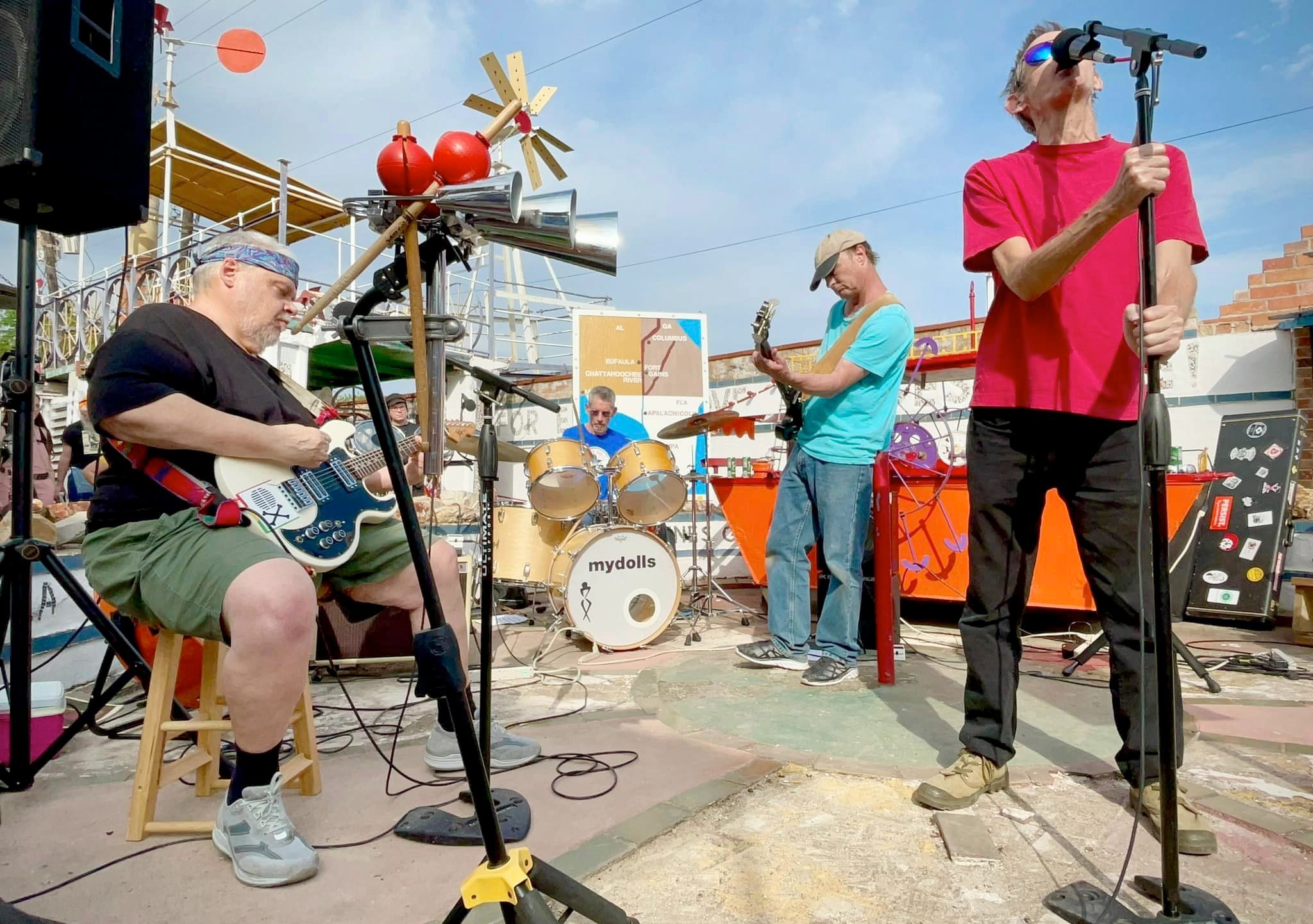
Thank you for taking your time. Last word is yours.
It’s been a great ride. We shall see where we go from here. C.I.A. Records is moving to the high desert in January and next year’s releases are already on order. Getting your email request for this interview was a surprise and an honor. I truly hope that we get to meet someday soon. Thanks and Stay Standing!
Klemen Breznikar
Headline photo: Really Red
Really Red Facebook
C.I.A. Records Official Website / Facebook / Instagram / Bandcamp / YouTube

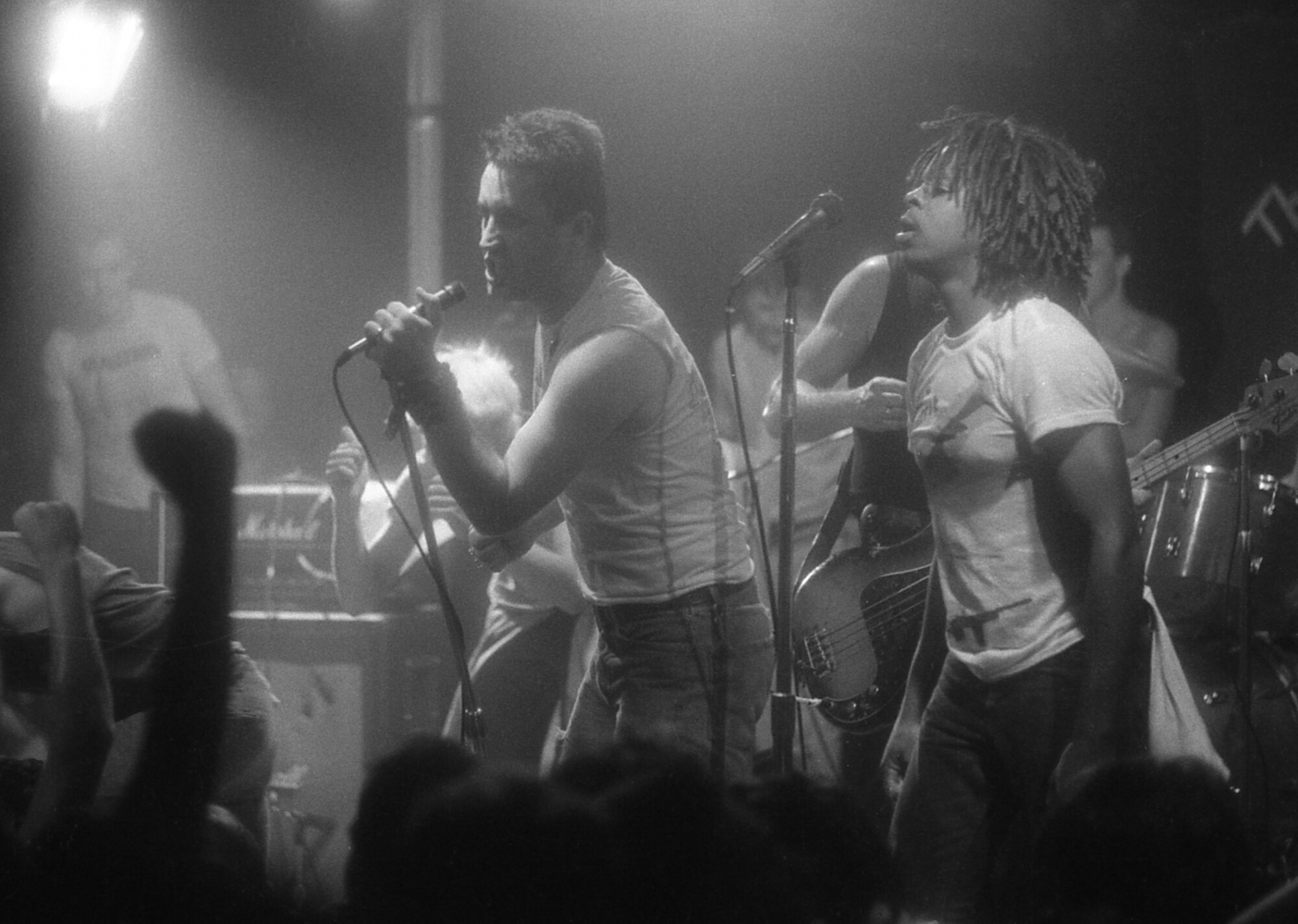



Thank you for the unknown US punk band.
Really Red and a small handful of other dedicated artists helped me survive growing up in Texas during the 80s – a time of extreme bigotry and intolerance toward anyone with non-mainstream ideas or identities. For this I am eternally grateful.